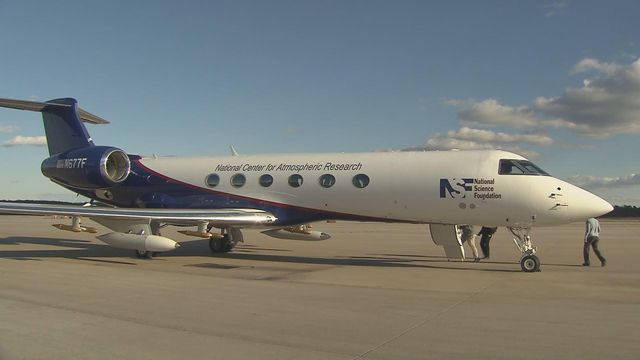Advanced radar makes maiden voyage from RDU
While many spent Groundhog Day looking beneath the ground for the forecast, scientists were soaring high above in search of better forecasts.
Posted — UpdatedWhile many spent Groundhog Day looking beneath the ground for the forecast, scientists were soaring high above in search of better forecasts.
A research team from the University of Illinois and the National Center for Atmospheric Research (NCAR) took a specially-equipped Gulfstream V plane from RDU and flew over the winter storm pounding New England.
The plane is called HIAPER (sounds like “hyper”), short for High-performance Instrumented Airborne Platform for Environmental Research. NCAR operates the plane in support of research projects across the country.
Today’s mission was to study the convective snow bands that often form in winter storms. These heavy snow bands are often responsible for producing the heaviest snowfalls, sometimes including thunder snow.
According to Bob Rauber, lead scientist from the University of Illinois, as these storms encounter the Atlantic, they have access to warm ocean water, making them more likely to develop the convective elements that are known to produce pockets, or bands, of heavy snow.
Rauber told me the wing-mounted HIAPER Cloud Radar is able to see these bands of convective elements more clearly than current radar systems.
"imagine you had a pair of glasses on that were like the bottoms of coke bottles, and then all of a sudden you went to the optometrist and you got the sharpest glasses you've ever had,” he said. "That's the difference between a standard radar and the radar we're using.”
Monday's flight was both a live test of the radar system as well as an assessment of this system’s performance ahead of a larger research project this summer. It also made history – while the HIAPER Cloud Radar has been on test flights, today was its first scientific mission.
• Credits
Copyright 2024 by Capitol Broadcasting Company. All rights reserved. This material may not be published, broadcast, rewritten or redistributed.





